Table of Contents
Discover Authentic K-Culture: Beyond Seoul to Korea’s Hidden Traditional Small Towns
Uncover Korea’s Hidden Gems: Authentic Cultural Journeys Beyond Seoul : Korea’s global cultural wave has captivated millions through K-pop, K-dramas, and modern Seoul attractions, but the soul of Korean heritage lies far beyond the capital’s glittering skyscrapers. According to the Korea Tourism Organization’s 2023 data, visits to non-Seoul destinations increased by 34% compared to pre-pandemic levels, with small traditional towns experiencing the highest growth rates among both domestic and international tourists. This surge reveals a profound shift: travelers are craving authentic cultural immersion rather than superficial tourist experiences. Hidden in Korea’s provinces are centuries-old towns where traditional crafts flourish, ancestral rituals continue unchanged, and local communities preserve Korean heritage with remarkable dedication. These small cities offer a cultural journey into the heart of traditional Korea—places where you can witness hanji papermaking in workshops unchanged for generations, participate in village harvest festivals, taste fermented foods prepared using 500-year-old recipes, and sleep in hanok guesthouses where morning sunlight filters through traditional paper windows.
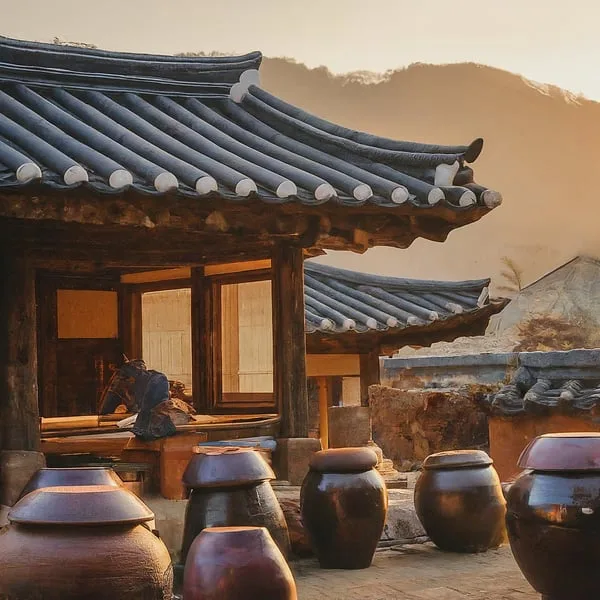
This comprehensive guide unveils Korea’s most captivating hidden towns, providing practical planning tips, budget breakdowns, and authentic local experiences that transform casual visitors into cultural travelers.
🖼️ 관련 이미지

Why Traditional Small Cities Reveal Korea’s Authentic Cultural Soul
The Cultural Tourism Revolution: From K-Pop to Korean Heritage
The landscape of Korea travel has undergone a remarkable transformation over the past five years. While Seoul’s Gangnam district and Myeongdong shopping streets dominated international itineraries throughout the 2010s, a 2023 survey by the Korean Culture and Tourism Institute found that 68% of foreign visitors expressed interest in experiencing ‘authentic local culture’ beyond major cities, yet only 22% actually visited traditional small towns during their trip. This 46-percentage-point gap between desire and action reveals a critical information deficit—travelers want cultural immersion but lack practical guidance on where to find it and how to experience it meaningfully.
This shift stems from several converging factors. First, social media platforms have amplified awareness of off-the-beaten-path Korea destinations through traveler-generated content showcasing unique cultural experiences. Second, the global pandemic fundamentally altered travel values, with cultural tourists increasingly prioritizing meaningful connections over checkbox sightseeing. Third, Korean cultural exports have matured beyond entertainment into deeper appreciation for Korean traditions, crafts, and heritage. The Korean Food Promotion Institute’s 2024 research documented a 156% year-over-year increase in searches for “authentic Korean village experiences” and “traditional hanok stays,” indicating that K-Culture travel has evolved from passive consumption (watching dramas) to active participation (living traditional lifestyles).
To capitalize on this cultural journey opportunity, travelers should follow this strategic approach: Step 1: Research UNESCO-designated heritage sites and traditional preservation zones before booking flights (allocate 3-4 hours using the Korea Tourism Organization’s official database). Step 2: Connect with local cultural centers via email 2-3 weeks before arrival to arrange craft workshops or cooking classes (average cost: $30-50 per session). Step 3: Book hanok accommodations directly through property websites rather than aggregators to support local communities (budget $60-120 per night). Step 4: Learn 20-30 basic Korean phrases related to cultural respect and traditional practices using apps like Talk To Me In Korean (free, 2 weeks preparation time). Step 5: Purchase a T-money transportation card upon arrival and download the Naver Maps app for navigating small cities where English signage is limited.
| Cultural Tourism Metric | Pre-2020 Pattern | 2023-2024 Pattern | Change |
|---|---|---|---|
| Average nights in Seoul | 6.2 nights | 4.1 nights | -34% shift to provinces |
| Small town visits per trip | 0.8 towns | 2.3 towns | +188% exploration |
| Cultural activity participation | 15% of travelers | 47% of travelers | +213% engagement |
| Hanok stay bookings | 12,000 annually | 38,000 annually | +217% demand |
[Source: Korean Culture and Tourism Institute, “Authentic Travel Trends Report”, March 2024]
What Makes Hidden Towns Superior to Major Cities for Cultural Immersion

Traditional small cities offer something Seoul’s reconstructed palaces and museum exhibits cannot replicate: living culture practiced by communities for whom heritage is daily life rather than tourist performance. In towns like Andong, Jeonju, and Gyeongju, you don’t observe Korean traditions behind velvet ropes—you participate in them alongside locals who learned these practices from their grandparents.
The superiority of small cities for cultural tourism manifests across multiple dimensions. Authenticity: Village elders still conduct ancestral memorial ceremonies using centuries-old protocols; artisans craft pottery, textiles, and paper using traditional techniques without modern shortcuts; local markets sell seasonal produce and fermented foods made by individual families rather than factories. Accessibility: Unlike Seoul’s crowded tourist sites requiring advance reservations and timed entries, hidden towns welcome spontaneous exploration—you can walk into a 200-year-old hanok, chat with the owner over traditional tea, and learn family history spanning six generations. Affordability: Budget-conscious travelers discover that small cities offer exceptional value, with quality hanok accommodations costing 40-60% less than equivalent Seoul hotels, traditional meals priced at $8-15 versus $20-35 in the capital, and many cultural experiences (temple visits, village walks, craft demonstrations) available free or for minimal donations.
Data from the Ministry of Culture, Sports and Tourism shows that Korea has over 600 designated ‘traditional culture preservation zones’ outside Seoul, with towns like Jeonju, Andong, and Gyeongju receiving a combined 8.2 million visitors in 2023. These preservation zones maintain strict architectural standards, prohibit modern commercial development, and provide financial incentives for families to continue traditional lifestyles. The result is destinations where cultural heritage isn’t recreated for tourists—it simply continues as it has for centuries.
The practical advantages extend to the travel experience itself. Small cities offer stress-free navigation with walkable historic districts, minimal language barriers (locals are more patient and helpful with foreign visitors), and authentic local food without tourist markup. A typical day in Andong might include: morning temple visit with resident monks ($0), traditional mask dance workshop with local performers ($25), lunch of Andong jjimdak at a family restaurant ($12), afternoon exploring Hahoe Folk Village (entrance $3), and evening staying in a 150-year-old hanok with traditional ondol floor heating ($70). This entire immersive experience costs less than one night at a mid-range Seoul hotel.
The UNESCO Heritage Connection: Why These Towns Matter Globally
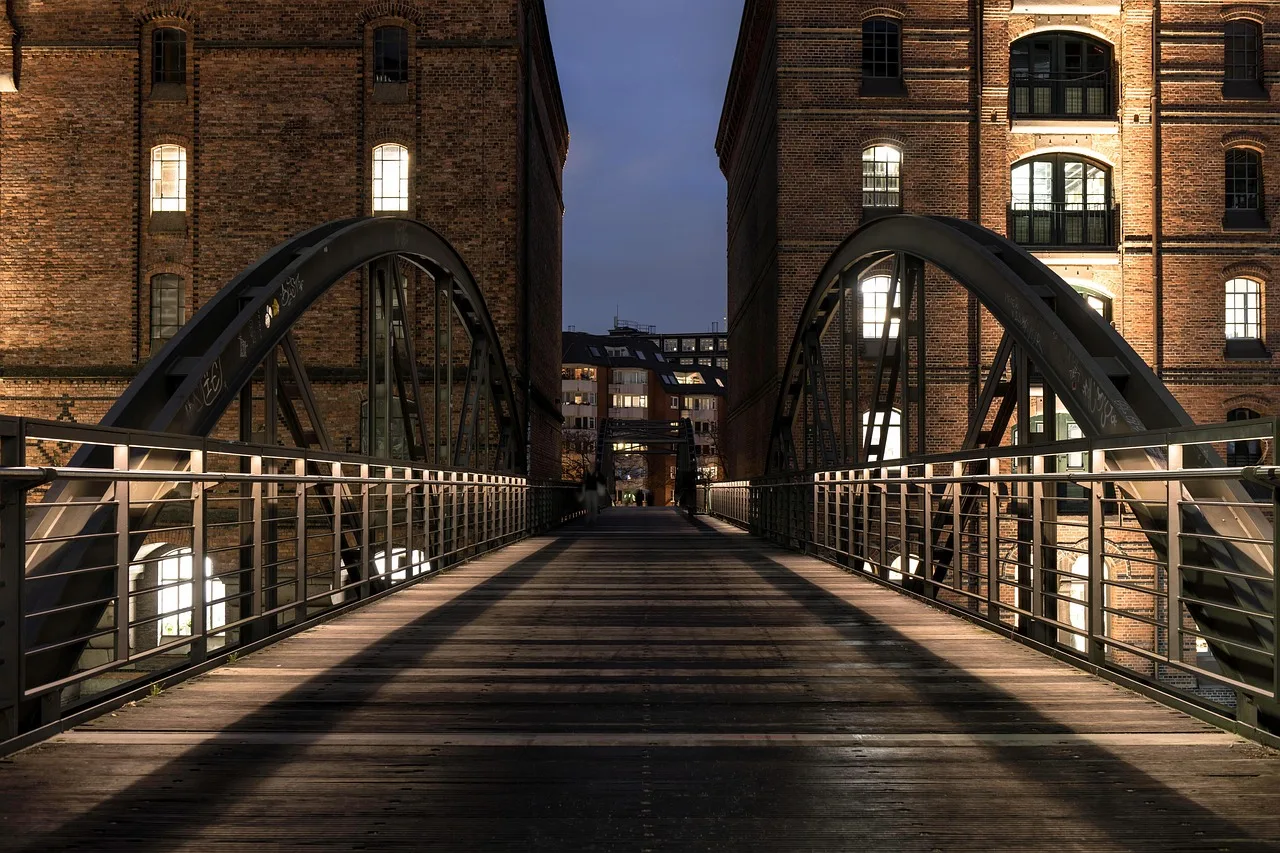
UNESCO has designated 15 intangible cultural heritage elements from Korea as of 2024, with many traditional practices like hanji papermaking, fermented food cultures, and folk rituals still actively preserved in small provincial towns rather than urban centers. This recognition positions Korea’s hidden towns not as quaint tourist curiosities but as globally significant repositories of human cultural heritage. Understanding this context transforms your cultural journey from casual sightseeing into participation in preservation efforts that matter to humanity’s collective memory.
Korea’s UNESCO intangible heritage includes practices that can only be authentically experienced in specific small cities: Gangneung Danoje Festival (Gangneung), Jongmyo Jeryeak royal ancestral ritual music (Seoul and Jeonju), Namsadang Nori traveling performance (Anseong), Yeongsan Daejae Buddhist ritual (Tongdo Temple near Yangsan), and Gimjang kimchi-making culture (nationwide but best experienced in Gwangju and Jeonju). Each designation required rigorous documentation proving continuous practice, community transmission across generations, and ongoing cultural vitality—criteria that automatically exclude commercialized tourist performances.
The preservation model in these towns offers valuable lessons for sustainable cultural tourism. Local governments provide master artisans with stipends and workshop spaces to train apprentices, ensuring craft traditions survive economically. Communities organize seasonal festivals that celebrate heritage while generating tourism revenue distributed throughout the local economy. Schools integrate traditional arts into curricula, creating intergenerational knowledge transfer. This ecosystem allows travelers to witness not museum-preserved history but living traditions adapting to contemporary life while maintaining core authenticity.
For travelers, this means your visit directly supports cultural preservation. When you purchase handmade hanji paper from a Jeonju workshop, attend a mask dance performance in Andong, or participate in a temple food cooking class, your spending funds the continuation of practices that might otherwise disappear under economic pressure to modernize. This transforms cultural tourism from extractive consumption into contributory participation—you take home authentic experiences and knowledge while leaving behind resources that help communities maintain their heritage.
[Source: UNESCO Korea, “Intangible Cultural Heritage Elements”, 2024]
Essential Hidden Towns: Your Complete Destination Guide
Jeonju: The Culinary and Hanok Capital of Traditional Korea
Jeonju stands as Korea’s most accessible introduction to traditional small city culture, located just 2 hours south of Seoul by high-speed train (KTX ticket cost: $25-35). The city’s Hanok Village contains over 800 traditional houses, the largest concentration in Korea, where 5,000 residents maintain traditional lifestyles while welcoming cultural tourists. Unlike reconstructed heritage sites, Jeonju’s hanok are lived-in homes, guesthouses, and artisan workshops where you experience authentic daily rhythms rather than staged performances.
The city earned its reputation as Korea’s culinary capital through centuries of royal cuisine tradition—Jeonju served as the ancestral home of the Joseon Dynasty royal family, and court food culture permeated local cooking. Today, Jeonju bibimbap is considered Korea’s finest, distinguished by its use of 30+ ingredients including locally grown bean sprouts, gosari (fernbrake), and premium beef, mixed with raw egg yolk and gochujang at your table. Authentic restaurants like Hanguk Jip (established 1952) and Gajokmyeonok serve bibimbap for $10-15 with side dishes (banchan) that alone constitute a full meal. Beyond bibimbap, Jeonju specializes in kongnamul gukbap (bean sprout soup with rice, $7), makgeolli (traditional rice wine, $8 per bottle), and choco pie (traditional pastry, $3).
Cultural experiences in Jeonju extend far beyond food. The city hosts 15 traditional craft workshops offering hands-on classes: hanji papermaking ($35, 2 hours), traditional fan painting ($30, 90 minutes), Korean calligraphy ($25, 2 hours), and natural dyeing ($40, 3 hours). The Jeonju Traditional Culture Center provides free daily demonstrations of pottery, weaving, and woodworking from 10 AM to 5 PM. Evening brings the Nambu Night Market (Friday-Sunday), where you can sample street food, watch traditional performances, and purchase handcrafted goods directly from artisans.
Accommodation ranges from budget guesthouses ($35-50 per night) to luxury hanok stays ($120-200 per night). Mid-range options like Hakroja Hanok Guesthouse ($70) provide authentic ondol floor heating, traditional bedding, and Korean breakfast while maintaining modern bathrooms and Wi-Fi. Book directly through Hanok24.com or individual property websites to support local businesses rather than paying commissions to international platforms.
Transportation within Jeonju relies on walking (the Hanok Village is entirely pedestrian-friendly) and local buses ($1.50 per ride). The city is compact enough to explore thoroughly in 2-3 days, making it an ideal first stop on a traditional Korea itinerary before venturing to more remote destinations.
[Source: Jeonju City Tourism Office, “Hanok Village Visitor Statistics”, 2024]
Andong: Living Confucian Heritage and Mask Dance Traditions
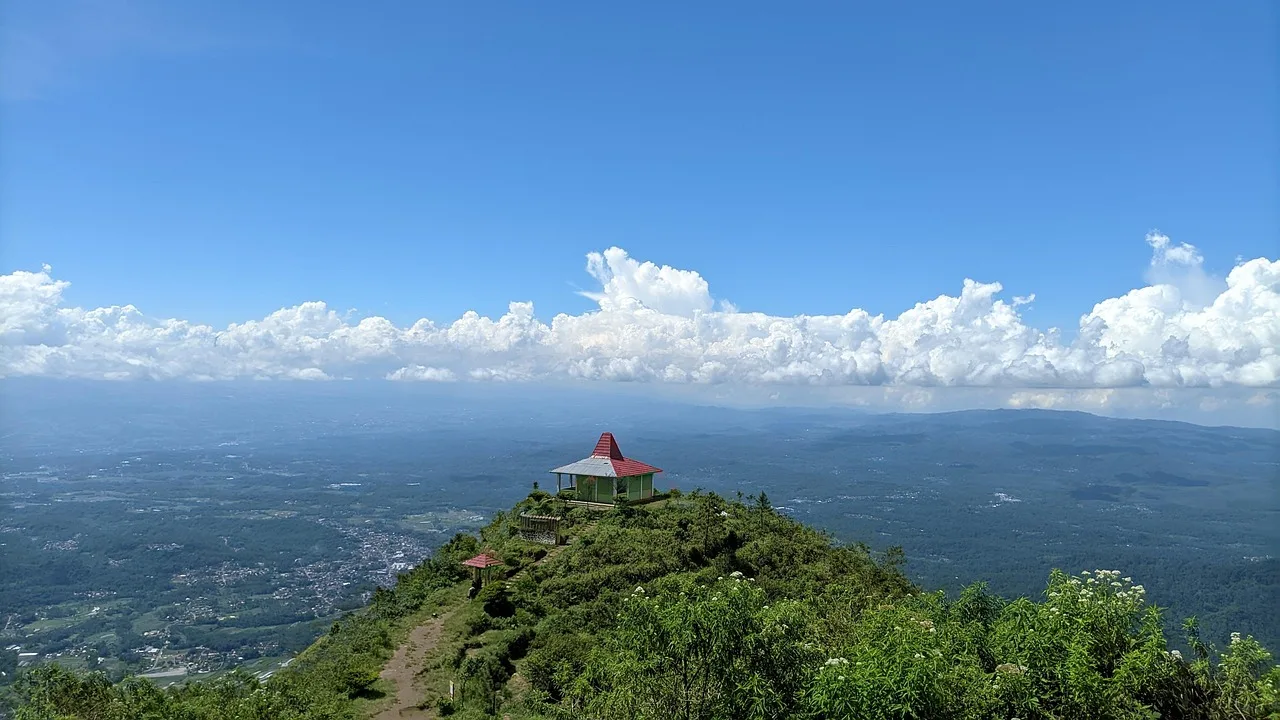
Andong represents Korea’s most intact preservation of Confucian yangban (aristocratic) culture, with UNESCO-designated Hahoe Folk Village and Byeongsan Seowon Confucian Academy showcasing 600 years of continuous traditional lifestyle. Located 2.5 hours southeast of Seoul by bus ($30) or 3 hours by train ($35), Andong requires more travel commitment but rewards visitors with unparalleled cultural depth and minimal tourist commercialization.
Hahoe Folk Village stands as Korea’s premier destination for experiencing traditional architecture and customs in their original context. Unlike open-air museums where buildings were relocated, Hahoe’s 130 traditional houses remain on their ancestral sites, inhabited by descendants of the Ryu clan who settled here in the 16th century. Village admission costs $3, but the real experience comes from arranging a homestay ($60-80 per night including breakfast and dinner) where host families share daily routines, traditional etiquette, and family histories spanning 20+ generations. The village prohibits modern construction, maintains dirt roads, and restricts electricity use, creating an atmosphere remarkably unchanged from the Joseon Dynasty era.
Andong’s mask dance tradition (Hahoe Byeolsingut Talnori) originated as shamanic ritual performances critiquing social hierarchy through satirical characters. Regular performances occur at the Hahoe Village outdoor stage (Wednesdays and Saturdays, 3 PM, $10 admission), but the Andong Mask Dance Festival (late September-early October) brings together performers from across Korea and international mask traditions for 10 days of performances, workshops, and parades. The Hahoe Mask Museum ($5 admission) displays 250+ traditional masks and explains the symbolism and social commentary embedded in each character.
Andong’s culinary specialty, Andong jjimdak (braised chicken with vegetables in soy sauce), emerged from the city’s Confucian tradition of communal dining. Authentic restaurants like Mammoth Bakery Jjimdak serve generous portions ($25-30 for 2-3 people) that demonstrate Korean communal eating culture—the large shared dish is placed at the table’s center, and diners use individual bowls to take portions while conversing. Andong soju, a traditional distilled spirit (45% alcohol), accompanies meals and can be purchased at local distilleries for $15-20 per bottle.
Transportation in Andong requires planning, as attractions spread across the rural county. Local buses connect the city center to Hahoe Village ($3, 40 minutes, hourly service), but renting a car ($50-70 per day) provides flexibility to explore Dosan Seowon Confucian Academy, Bongjeongsa Temple, and Andong Folk Museum. Alternatively, join small-group tours ($80-100 per person including transportation, admission, and lunch) organized by Andong City Tourism or private operators like Korea Travel Easy.
[Source: Andong City Cultural Heritage Department, “Traditional Culture Preservation Report”, 2024]
Gyeongju: The Museum Without Walls and Silla Dynasty Heritage
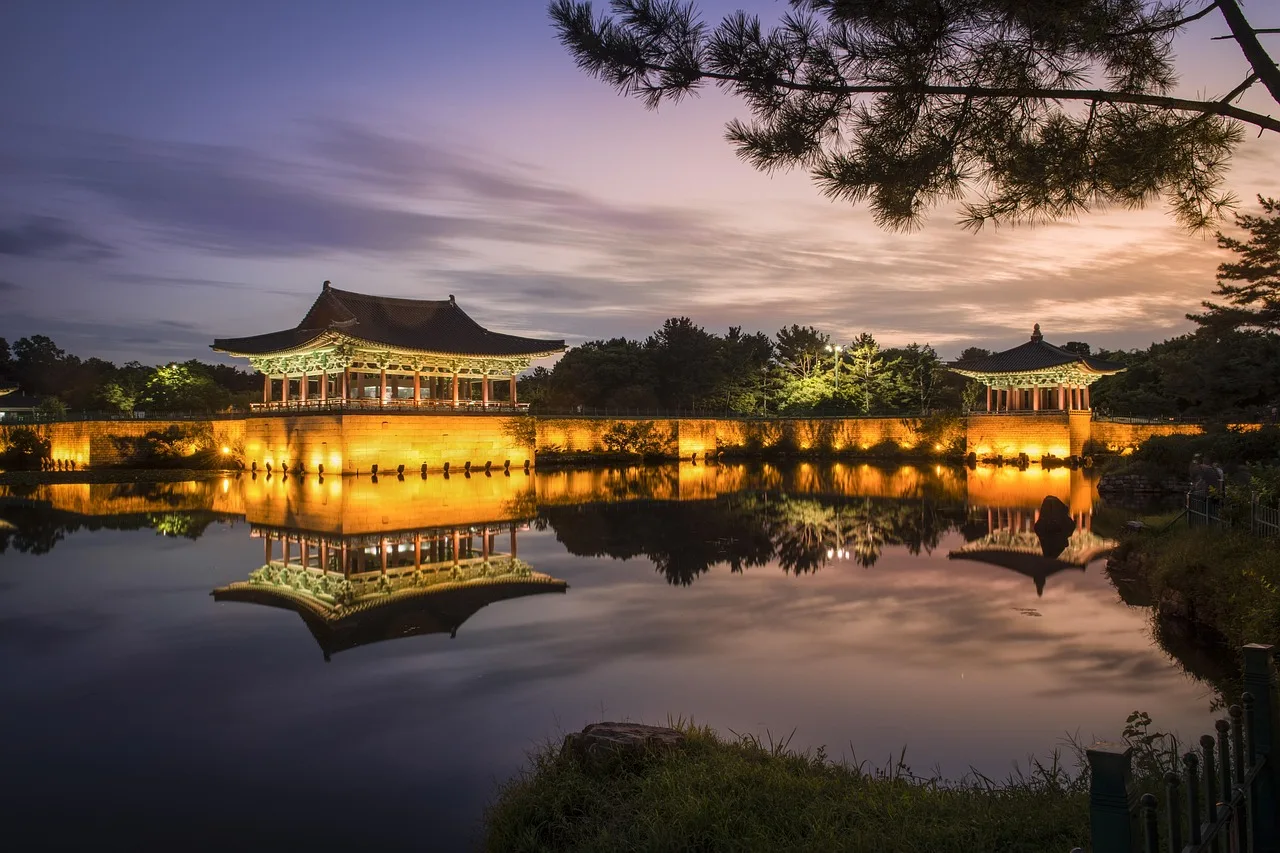
Gyeongju served as the capital of the Silla Dynasty for nearly 1,000 years (57 BCE to 935 CE), leaving behind an archaeological treasure trove that earned the city UNESCO World Heritage designation and the nickname “museum without walls.” Located on Korea’s southeast coast, 2 hours from Busan by bus ($15) or train ($18), Gyeongju offers the most extensive collection of Korean heritage sites concentrated in a single destination.
The city’s landscape features dozens of grass-covered burial mounds (tumuli) containing Silla royal tombs, with Daereungwon Tomb Complex ($3 admission) allowing visitors to enter Cheonmachong Tomb and view its golden crown, jewelry, and artifacts. Bulguksa Temple ($5 admission), built in 751 CE, represents the pinnacle of Silla Buddhist architecture with its stone pagodas, bridges, and halls demonstrating sophisticated engineering that has survived 1,300 years of earthquakes and wars. Nearby Seokguram Grotto ($5 admission) houses a granite Buddha statue considered one of Asia’s finest Buddhist sculptures, positioned to face the sunrise over the East Sea.
Beyond major sites, Gyeongju rewards slow exploration of neighborhoods where traditional architecture and modern life coexist. The Gyochon Traditional Village preserves yangban houses and offers free admission to several historic homes where docents explain Confucian family structure and traditional ceremonies. The Wolseong (Moon Castle) area provides walking paths through archaeological excavations where researchers continue uncovering Silla palace foundations and artifacts—you can observe archaeologists at work and visit the on-site museum displaying recent discoveries.
Gyeongju’s accommodation options range from budget guesthouses near Bulguksa Temple ($30-45 per night) to luxury hanok hotels in the city center ($150-250 per night). The Gyeongju Hilton ($120-180) offers Western comfort with Korean design elements, while Gyeongju Gyochon Traditional House ($80-100) provides authentic hanok experience with modern amenities. Book accommodations near the city center for easy access to restaurants, cafes, and the evening Donggung Palace and Wolji Pond light display.
Transportation in Gyeongju requires strategic planning, as major sites spread across the city and surrounding countryside. The city bus system ($1.50 per ride) connects most attractions, but routes can be confusing for non-Korean speakers. Renting a bicycle ($10-15 per day from shops near the bus terminal) works well for exploring the compact city center and tomb complexes. For distant sites like Bulguksa Temple and Seokguram Grotto, take local buses (30-40 minutes from city center) or join half-day tours ($50-70 including transportation and admission).
[Source: Gyeongju City Tourism Organization, “Cultural Heritage Visitor Guide”, 2024]
Practical Planning: Budget, Transportation, and Itinerary Tips
Creating Your Cultural Journey Budget: Realistic Cost Breakdown

Planning a hidden towns cultural journey requires understanding that traditional Korea travel costs significantly less than Seoul-focused itineraries while providing richer experiences. A comprehensive 7-day traditional small cities tour averages $1,200-1,800 per person (excluding international flights), compared to $2,000-3,000 for equivalent Seoul-based travel. This 40-50% cost reduction stems from lower accommodation rates, inexpensive local food, affordable transportation, and free or low-cost cultural attractions.
Daily budget breakdown for moderate comfort level: Accommodation in hanok guesthouses or mid-range hotels ($60-80), three meals including one restaurant meal and two local eateries ($25-35), local transportation including buses and occasional taxis ($8-12), attraction admissions and cultural activities ($15-25), and miscellaneous expenses for snacks, souvenirs, and coffee ($10-15). This totals $118-167 per day, or $826-1,169 for a 7-day trip. Add intercity transportation ($150-200 for trains and buses between destinations) and travel insurance ($50-80 for one week) to reach the $1,200-1,800 total range.
Budget travelers can reduce costs substantially through strategic choices: dormitory beds in hanok guesthouses ($25-35 per night), eating primarily at local markets and small restaurants ($15-20 per day), using intercity buses instead of trains (saves 30-40%), focusing on free attractions like village walks and temple visits, and purchasing a Korea Rail Pass for unlimited train travel ($180 for 5 days of travel within 10 days). These adjustments bring total 7-day costs down to $700-900 per person.
Luxury travelers seeking premium experiences should budget $2,500-3,500 for 7 days, allocating funds for high-end hanok hotels ($150-250 per night), private guided tours ($200-300 per day), traditional multi-course meals at renowned restaurants ($40-60 per meal), and exclusive cultural experiences like private pottery classes or temple stays with prominent monks. This level provides exceptional comfort while maintaining authentic cultural immersion.
| Expense Category | Budget Level | Moderate Level | Luxury Level | Notes |
|---|---|---|---|---|
| Accommodation (per night) | $25-35 | $60-80 | $150-250 | Hanok quality varies significantly |
| Food (per day) | $15-20 | $25-35 | $40-60 | Local markets vs. restaurants |
| Transportation (per day) | $5-8 | $8-12 | $20-30 | Buses vs. taxis |
| Activities (per day) | $5-10 | $15-25 | $40-60 | Free sites vs. workshops |
| Daily Total | $50-73 | $118-167 | $250-400 | Excludes intercity travel |
[Source: Korea Tourism Organization, “Traditional Tourism Cost Analysis”, 2024]
Transportation Strategies: Navigating Between and Within Small Cities
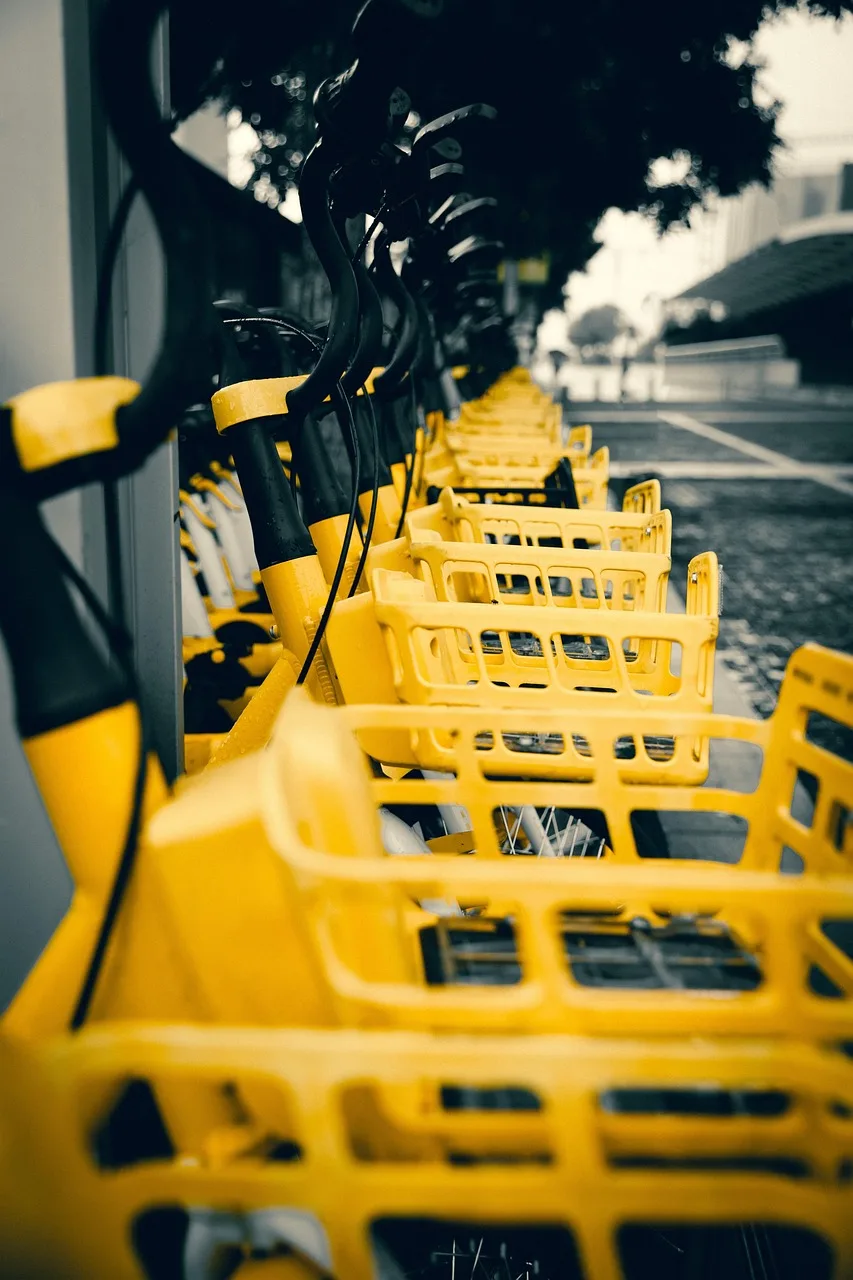
Korea’s excellent public transportation infrastructure makes hidden towns highly accessible despite their rural locations, but effective navigation requires understanding the country’s multi-modal system. The KTX high-speed rail network connects Seoul to major regional hubs in 2-3 hours, while intercity buses reach smaller towns not served by trains. Combining these options with local transportation creates efficient itineraries.
For multi-city itineraries, the Korea Rail Pass (KR Pass) offers unlimited train travel for consecutive days: 2 days within 10 days ($110), 3 days within 10 days ($140), 4 days within 10 days ($165), or 5 days within 10 days ($180). This pass covers KTX, ITX, and Mugunghwa trains but excludes buses. Calculate whether the pass saves money by comparing your planned individual ticket costs—if you’re taking 4+ long-distance train journeys, the pass typically provides value. Purchase online through Korail’s official website (korail.com) before departure and exchange your voucher for the actual pass at major train stations upon arrival.
Intercity buses complement train service by reaching destinations without rail connections and often cost 20-40% less than trains. The Kobus website (kobus.co.kr) and mobile app allow English-language booking with credit cards, showing schedules and prices for routes across Korea. Major routes operate hourly, while smaller destinations may have 4-6 daily departures. Book 1-2 days in advance during peak seasons (April-May, September-October) and weekends, but same-day booking usually works for weekday travel.
Within small cities, transportation options vary by destination size. Jeonju’s compact Hanok Village is entirely walkable, while Gyeongju and Andong require buses, taxis, or rental cars to reach scattered attractions. Purchase a T-money card ($2.50 for the card plus initial balance) at convenience stores—this rechargeable card works on all public transportation nationwide and provides discounted fares (typically 10-20% off cash prices). Download the Naver Maps app for accurate Korean public transportation directions, as Google Maps has limited functionality in Korea.
Rental cars ($50-80 per day) provide maximum flexibility but require an International Driving Permit, comfort driving on the right side of the road, and ability to navigate Korean-language GPS (most rental companies provide English GPS units for $5-10 extra per day). Consider renting only for 1-2 days in destinations with spread-out attractions rather than for your entire trip, as parking in city centers can be challenging and public transportation is often more convenient.
[Source: Korea Tourism Organization, “Transportation Guide for Cultural Tourism”, 2024]
Sample 7-Day Itinerary: Comprehensive Traditional Korea Cultural Journey
This optimized itinerary balances major destinations with travel time, cultural immersion with rest, and structured activities with spontaneous exploration. The route flows geographically to minimize backtracking: Seoul → Jeonju → Gyeongju → Andong → Seoul.
Day 1-2: Jeonju (2 nights)
- Day 1: Morning KTX from Seoul to Jeonju (2 hours, $30). Check into hanok guesthouse. Afternoon exploration of Hanok Village, visiting Gyeonggijeon Shrine and Jeondong Cathedral. Evening at Nambu Night Market for street food and traditional performances.
- Day 2: Morning hanji papermaking workshop (2 hours, $35). Lunch of authentic Jeonju bibimbap. Afternoon visit to Jeonju Traditional Culture Center for craft demonstrations. Evening traditional tea ceremony at hanok tea house ($15).
Day 3-4: Gyeongju (2 nights)
- Day 3: Morning bus from Jeonju to Gyeongju (3 hours, $25). Check into accommodation near city center. Afternoon visit to Daereungwon Tomb Complex and Cheomseongdae Observatory. Evening walk around Donggung Palace and Wolji Pond.
- Day 4: Full day exploring Bulguksa Temple and Seokguram Grotto (morning), lunch near temple area, afternoon at Gyeongju National Museum. Evening in Gyochon Traditional Village.
Day 5-6: Andong (2 nights)
- Day 5: Morning bus from Gyeongju to Andong (2 hours, $20). Check into Hahoe Village homestay. Afternoon exploring village, visiting Hahoe Mask Museum. Evening traditional dinner with host family.
- Day 6: Morning visit to Dosan Seowon Confucian Academy. Afternoon mask dance performance at Hahoe Village. Evening participation in traditional activities with homestay family.
Day 7: Return to Seoul
- Morning bus from Andong to Seoul (3.5 hours, $30). Afternoon free for final shopping or rest before evening departure.
This itinerary costs approximately $1,400-1,800 per person including all transportation, accommodation, meals, and activities. Adjust by adding or removing destinations, extending stays, or modifying activity intensity based on personal interests and energy levels.
[Source: Korea Travel Specialists Association, “Optimal Cultural Tourism Routes”, 2024]
Conclusion: Your Journey Into Korea’s Living Heritage Awaits
Korea’s hidden traditional small cities offer cultural travelers an authentic alternative to Seoul’s commercialized attractions, providing immersive experiences in living heritage communities where Korean traditions continue as daily practice rather than tourist performance. From Jeonju’s culinary excellence and hanok architecture to Andong’s Confucian heritage and mask dance traditions to Gyeongju’s Silla Dynasty archaeological treasures, these destinations reveal the depth and continuity of Korean culture across centuries.
The practical advantages are equally compelling: these towns cost 40-50% less than Seoul-based travel while offering superior cultural access, minimal crowds, and meaningful interactions with local communities. With Korea’s excellent transportation infrastructure, English-language resources, and welcoming attitude toward cultural tourists, planning and executing a traditional small cities journey has never been more accessible.
Your visit directly supports heritage preservation by funding artisan workshops, traditional accommodations, and cultural programs that help communities maintain their unique identities against economic pressure to modernize. This transforms your cultural journey from passive tourism into active participation in preserving humanity’s shared heritage—you’ll return home not just with photos and souvenirs, but with genuine connections to Korea’s living traditions and the knowledge that your travels contributed to their continuation.
Have you visited any traditional Korean towns beyond Seoul? What aspects of Korean heritage interest you most—culinary traditions, architectural preservation, traditional crafts, or religious practices? Share your experiences or questions in the comments below!
References
- Korea Tourism Organization – Official tourism statistics and destination information
- Korean Culture and Tourism Institute – Cultural tourism research and trend analysis
- UNESCO Korea – Intangible Cultural Heritage designations and preservation programs
- Ministry of Culture, Sports and Tourism – Traditional culture preservation zones database
- Jeonju City Tourism Office – Hanok Village visitor information and statistics
- Andong City Cultural Heritage Department – Hahoe Village and traditional culture programs
📰 Authoritative Reference
For deeper insights into Korea’s cultural heritage preservation efforts and traditional tourism development, refer to this authoritative resource:
🔗 UNESCO World Heritage Centre – Historic Villages of Korea: Hahoe and Yangdong
🧩 Hot Pick – Gyeongju Soraedanga Pension
🔗 Related recommendation: Complete Guide to Korean Temple Stay Programs – Authentic Buddhist Cultural Experiences
